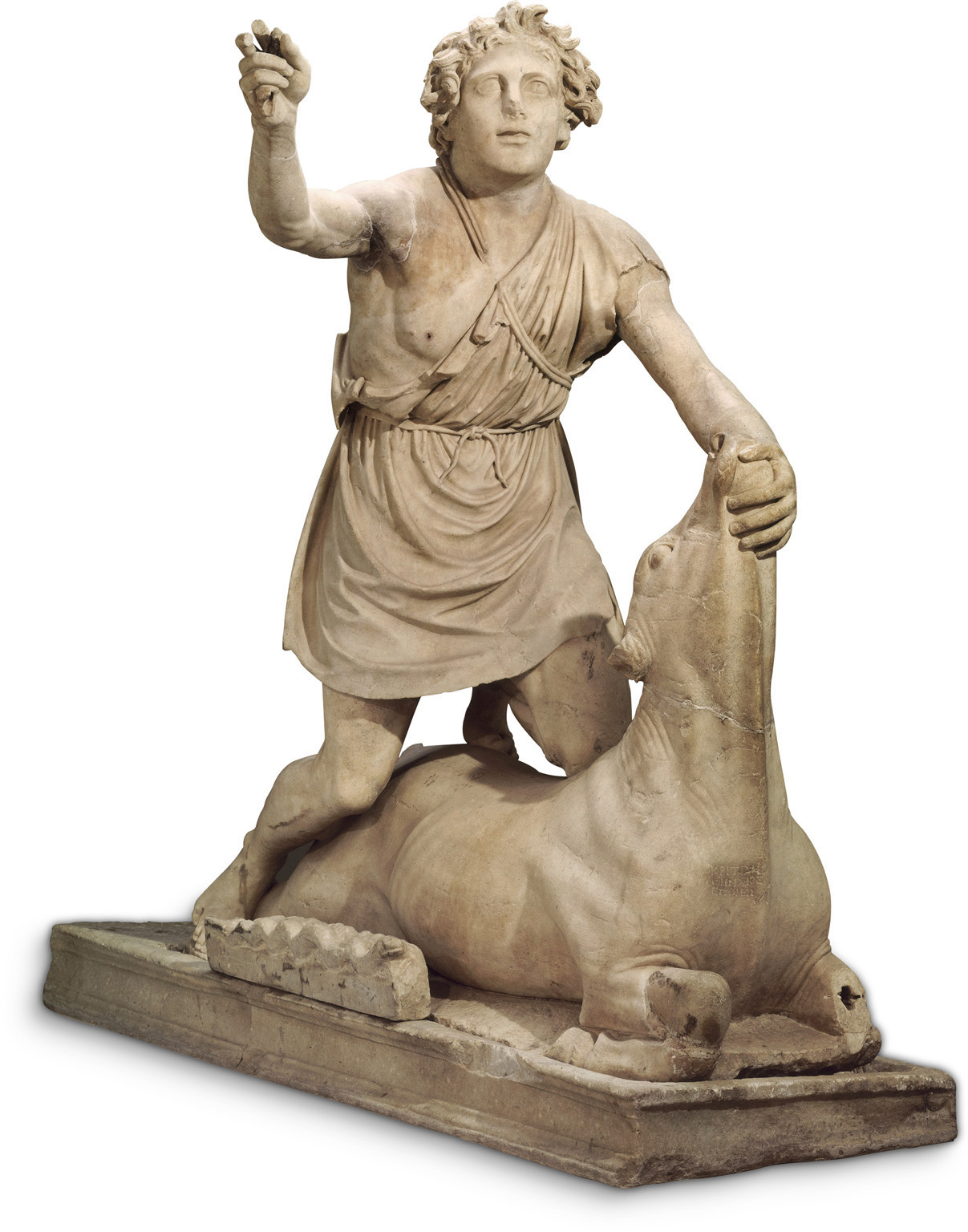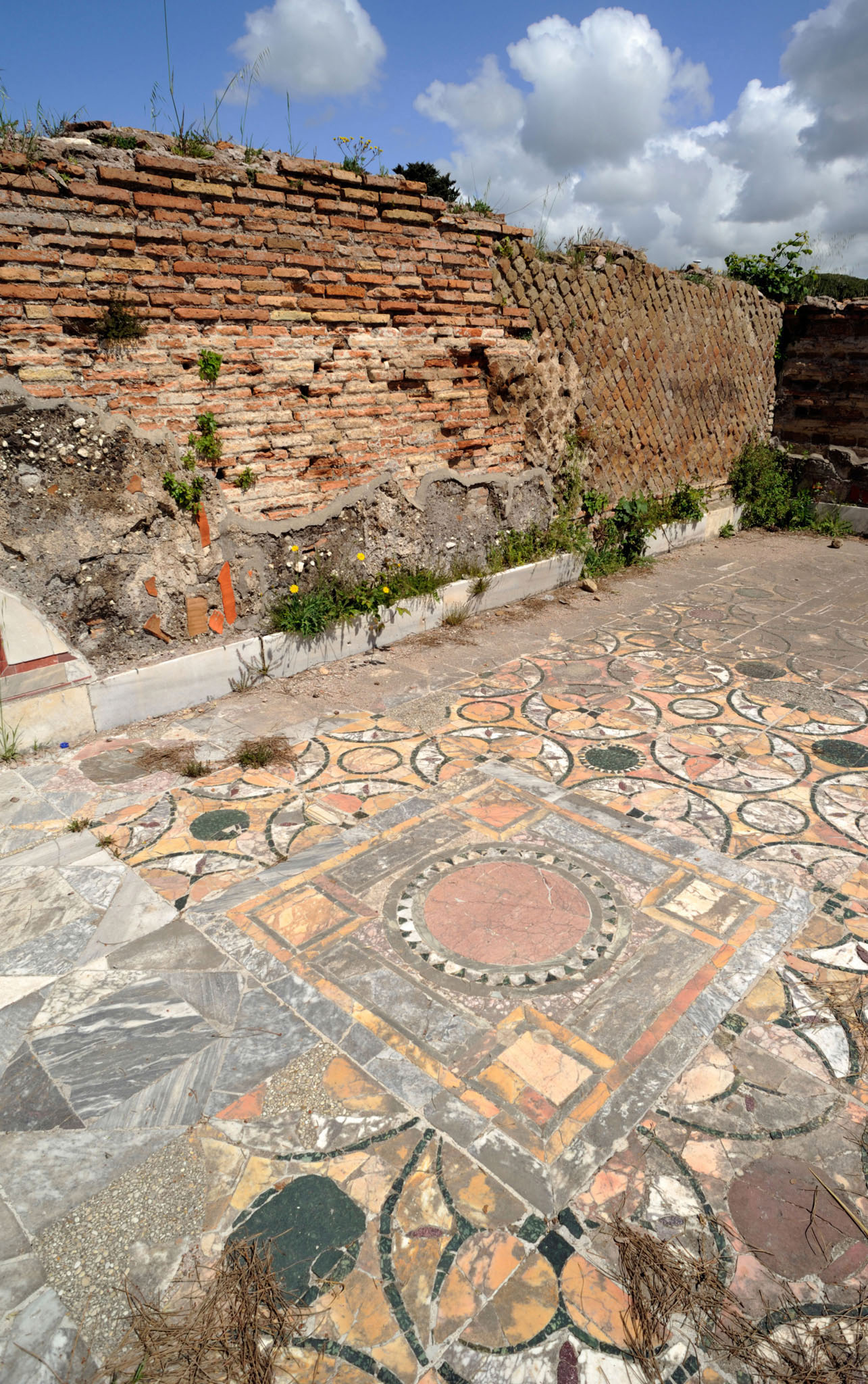
OSTIA ANTICA
Some 2,000 years ago, this lively international port city was at the seashore (ostium means “river mouth”), but over the millennia the sea retreated and the river changed course. Ostia was founded in the 4th century BCE as a simple fort, but as Rome grew, the town became important as an import hub. Its heyday ended in the 4th century CE, and it died completely as an inhabited area about 1,000 years ago.
NEED TO KNOW
![]() Viale dei Romagnoli 717 • 06 5635 8099 • Metro B, trams 3 and 30, or buses 23, 75, 95, 280 to Piramide, then local train from Porta San Paolo Station (next to the metro station) to Ostia Antica • Open Nov–Feb: 8:30am– 3:30pm Tue–Sun; Mar–Aug: 8:30am–4:30pm Tue–Sun; Sep–Oct: 8:30am–5:30pm Tue–Sun (last admission one hour before closing); closed Jan 1, May 1, Dec 25 • Adm $11 ($6 EU citizens 18–25); under 18 free; free first Sun of the month • The port area (Trajan’s Port) can be visited on request, 06 6501 0089
Viale dei Romagnoli 717 • 06 5635 8099 • Metro B, trams 3 and 30, or buses 23, 75, 95, 280 to Piramide, then local train from Porta San Paolo Station (next to the metro station) to Ostia Antica • Open Nov–Feb: 8:30am– 3:30pm Tue–Sun; Mar–Aug: 8:30am–4:30pm Tue–Sun; Sep–Oct: 8:30am–5:30pm Tue–Sun (last admission one hour before closing); closed Jan 1, May 1, Dec 25 • Adm $11 ($6 EU citizens 18–25); under 18 free; free first Sun of the month • The port area (Trajan’s Port) can be visited on request, 06 6501 0089
- There’s a snack bar behind the museum.
- The ruined walls look confusingly similar—rent an audio guide where you buy your entrance ticket.
Park Guide
The trip by local train is easy, short, and costs the same as one regular bus ticket. From the Ostia Antica train station, walk straight out to the footbridge that goes over the motorway. Continue past the restaurant until you get to the ticket booth. The park is extensive and a decent visit will take at least 3 hours. Wear sturdy shoes, and bring sunscreen and water on hot days.
1. Decumanus Maximus
You enter this vast archaeological park by way of the ancient Via Ostiensis. The white marble goddess on the left marks the start of the city’s main street, lined with buildings: the Decumanus Maximus.
2. Casa di Diana and Thermopolium
You can climb up to the top of this insula (apartment block) for a great view across the site. Across the street is the Thermopolium, a tavern with a delightful wall painting of menu items.

3. Museum
Beautifully organized, the displays include precious sculptures, sarcophagi, and mosaics found among the ruins. A highlight is a statue of the god Mithras about to sacrifice the Cosmic Bull.

4. Forum
The rectangular heart of officialdom was originally encircled by columns. In the center was a shrine to the Imperial Lares (household gods).
5. Mithraeum of the Serpents
One of 18 Ostian temples to Mithras. The cult was popular with Roman soldiers, and flourished especially well in port towns. The snake frescoes invoked the earth’s fertility; the platforms were for lying on during mystic banquets.
6. Theater
The original theater was twice as tall as it now stands. Behind the stage was a temple, of either Ceres (goddess of grain) or Dionysus (god of theater).

7. Piazzale delle Corporazione
This large piazza is surrounded by the ruins of what were once the offices of various maritime businesses, each with a black and white mosaic advertising its trade—chandlers, rope-makers, importers of grain, ivory, wild animals. One has a charming elephant mosaic.
8. Terme di Nettuno
Built in the 2nd century, this bath complex was enhanced with fine mosaics of sea gods and sea monsters, which you can view from a small terrace. You can also go down to the left to study close-up the ingenious heating system of the baths.

9. Terme dei Sette Sapienti
This elaborate bath complex contains a painting of Venus; floor mosaics of hunters, animals, nude athletes, and marine scenes; and humorous texts in Latin.
10. House of Cupid and Psyche
The wealthy had villas like this refined example of a 3rd-century CE domus. You can still admire the Doric columns, the fountain (nymphaeum), and the inlaid marble decorations.

